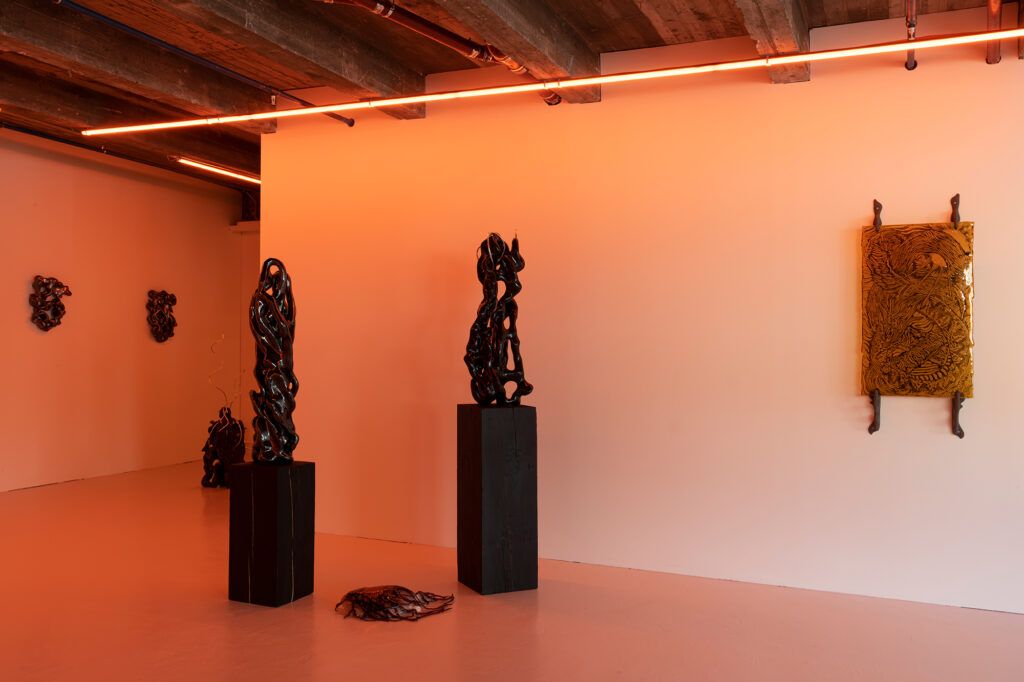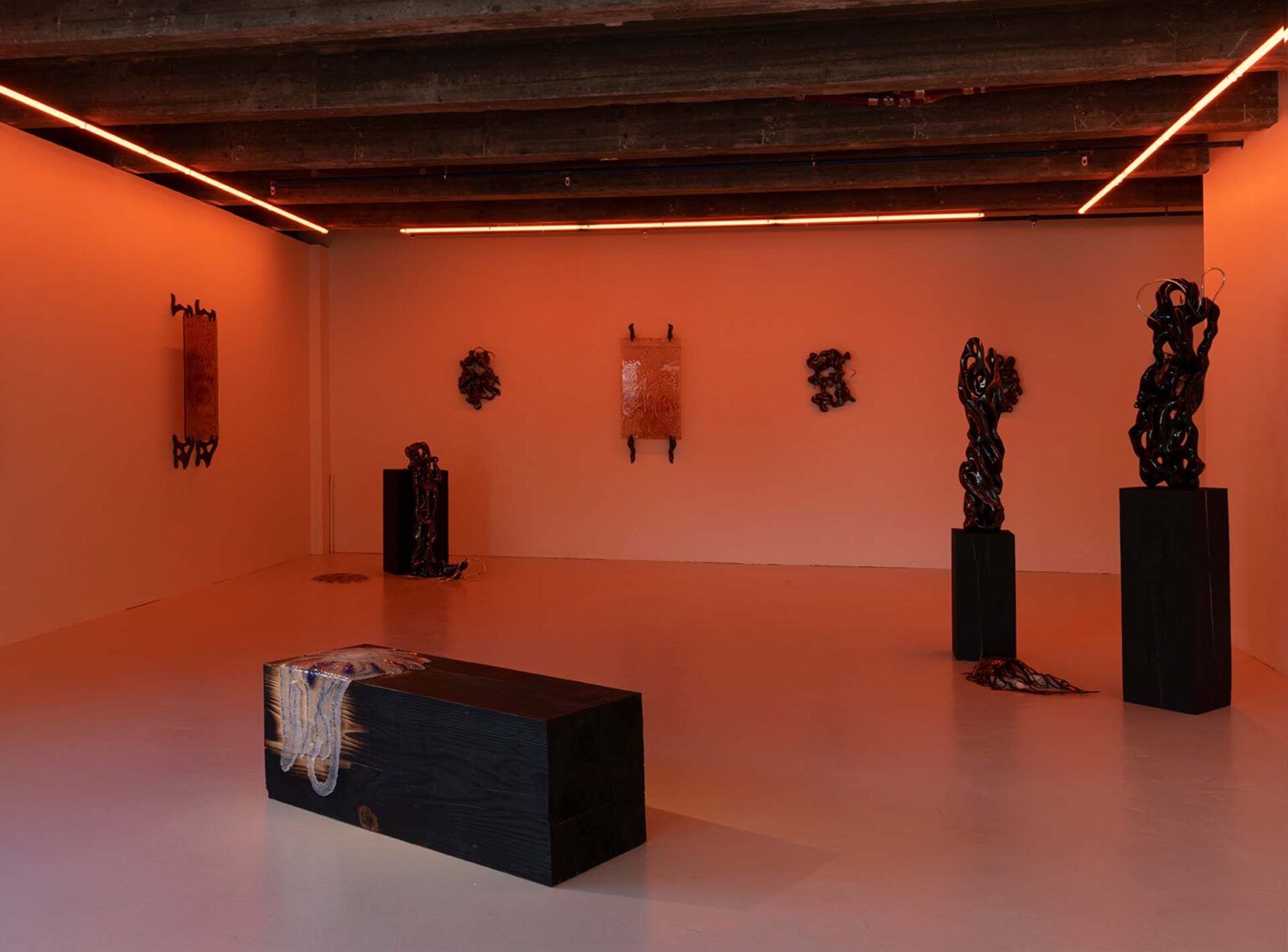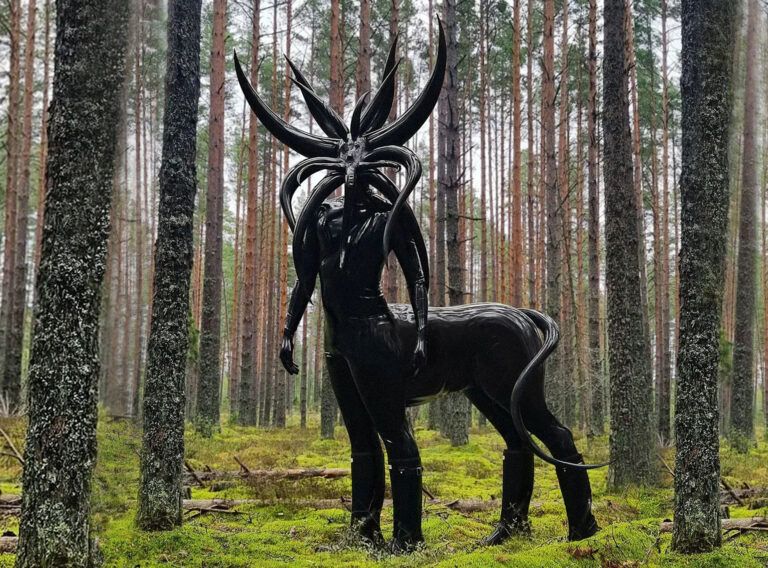The exhibition “Oil Nebula” draws inspiration from John Milton’s Paradise Lost and the concept of the abyss as a metaphor for societal collapse. Can you explain how the abyss is represented in your artworks and what message or feeling you aim to convey to viewers?
In the epic, the abyss is described as a place without cardinal directions, where a chaotic matter with the potential to form new worlds exists. It’s a fearsome place for the poem’s protagonist Satan, because the nature of the abyss is unknown, ungoverned and in constant transformation, and he finds himself in the midst of it, unable to control the situation. I think that the 17th-century description of this intangible ocean is very interesting because it alludes to ideas that formed much later, such as dark matter, but also because I found it impossible to read it today without thinking about the actual ocean and its transformation, how it is slipping away from former definitions and predictability. Through the works, I wanted to think about how one can visualize such an environment or nature that one knows is changing faster than current methods are able to model and measure, therefore becoming impossible to see, a constant unknown. The works in the show are meant to act as this unknown and perhaps as dissolving components of a former sea with the ability to now shape-shift. A few of the sculptures have these revolving forms that look very different from each angle, leaving the viewer to circle around them to comprehend their form. The changing nature of the abyss is also represented in the lighting of the show which relies on colored lamps and the shifting daylight coming in through colored window foils, sometimes casting amber sunbeams onto the different pieces.
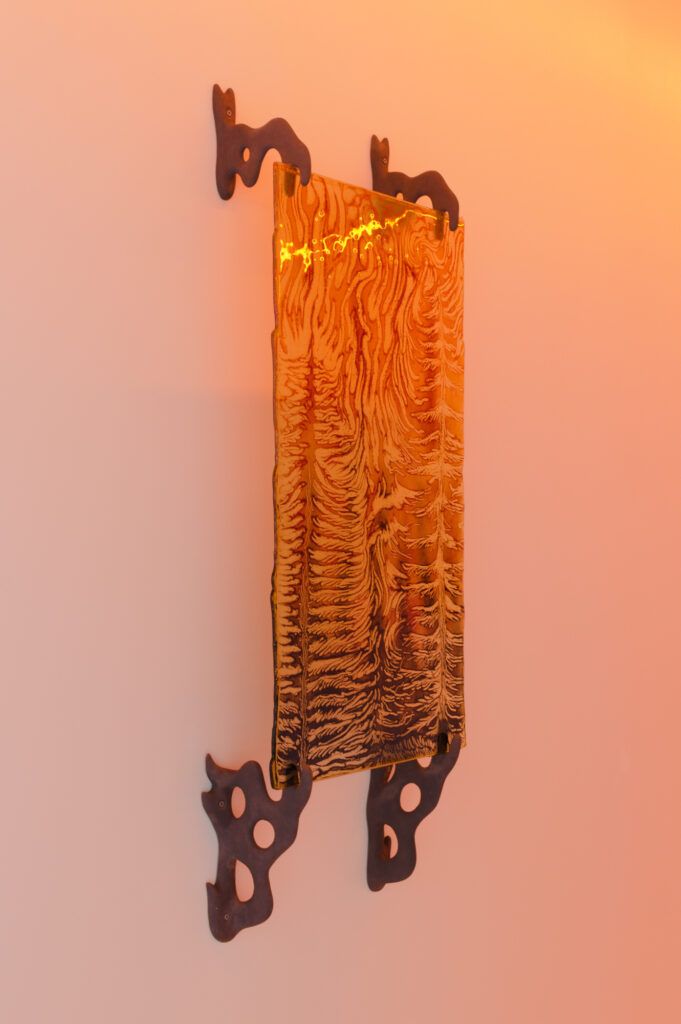
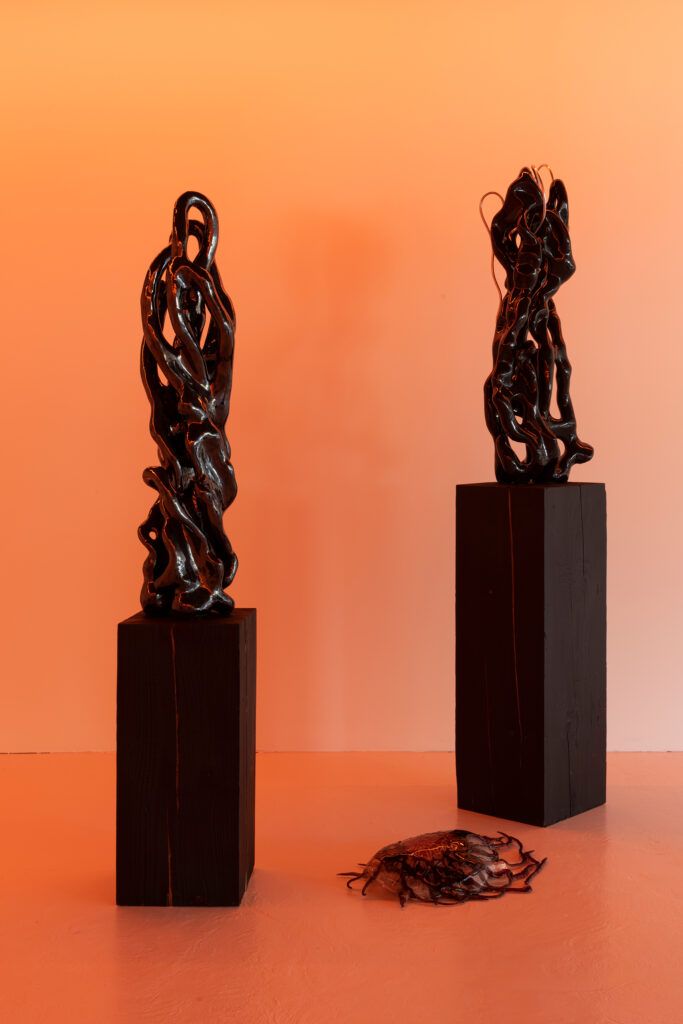
The jellification of the oceans and the prevalence of invasive species serve as important themes in the exhibition. Do you plan to continue working around these themes in the future?
I would like to say yes, but probably in a wider perspective. My interest in those two themes lies in how both the materiality and the perception of the world are currently changing. How ideas shape matter and vice versa is very central to my practice, so I believe my upcoming works will also be part of that, but whether the specific concept of jellification will return I can’t say.
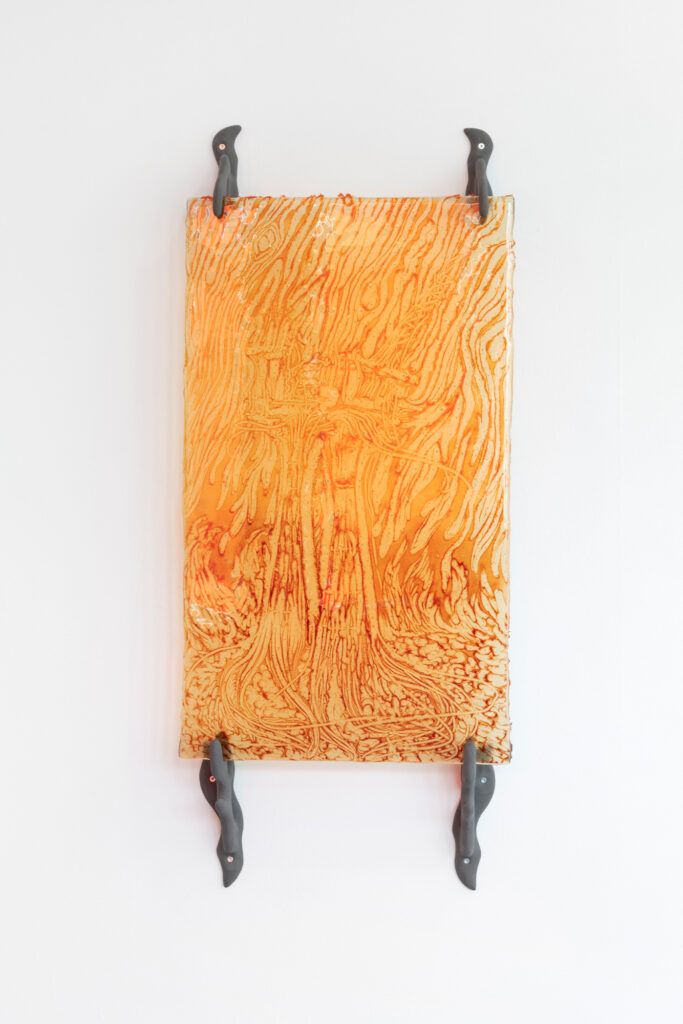
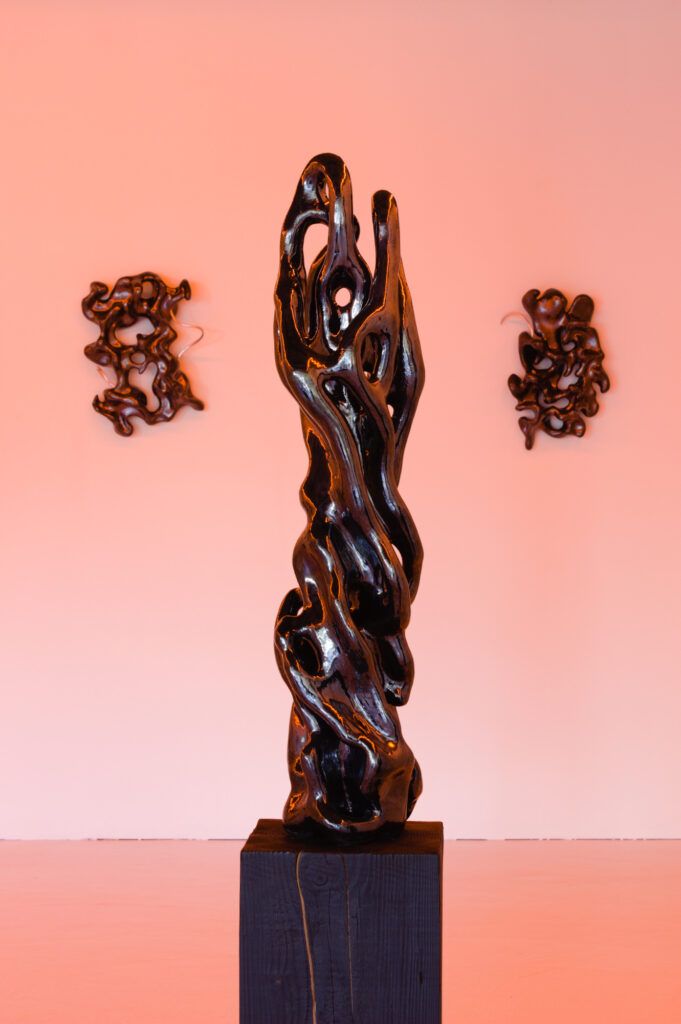
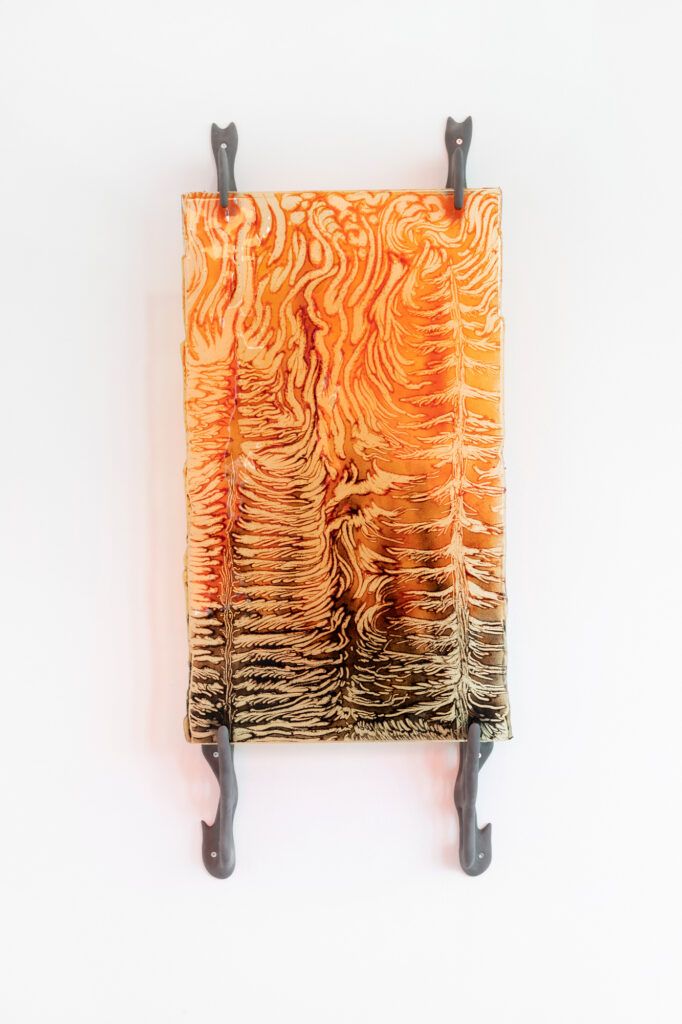
Mythologizing the defamiliarized earth is mentioned as a goal of the exhibition. How do the artworks achieve this, and what aspects of the defamiliarized earth do they explore?
I think of myths as these tools that have been used throughout history by people to visualize ungraspable concepts, such as the beginning of time and matter and their ending. The myths form a framework through the use of narratives and symbols that somehow make these very abstract topics possible to visualize. Of course today, the most common way to understand the changes of the earth on a global scale is through collecting various data, but once assembled, this data shows an image of the past, recent, but still the past, thus leaving the present invisible. So in a way, there is a very high discrepancy between the level of information of what has recently been and the very now, which heightens the feeling of the present and future being this unknown. This is where I see the potential for the myth to again become a tool to visualize potential presents and the current state of the changing earth. The way the poem Paradise Lost builds its worlds is by sampling figures and places from different myths, so the exhibition is also built on the very culturally saturated visual language of stories about collapsing worlds to envision a present state of the sea that has already shifted away from what we would define as a sea.
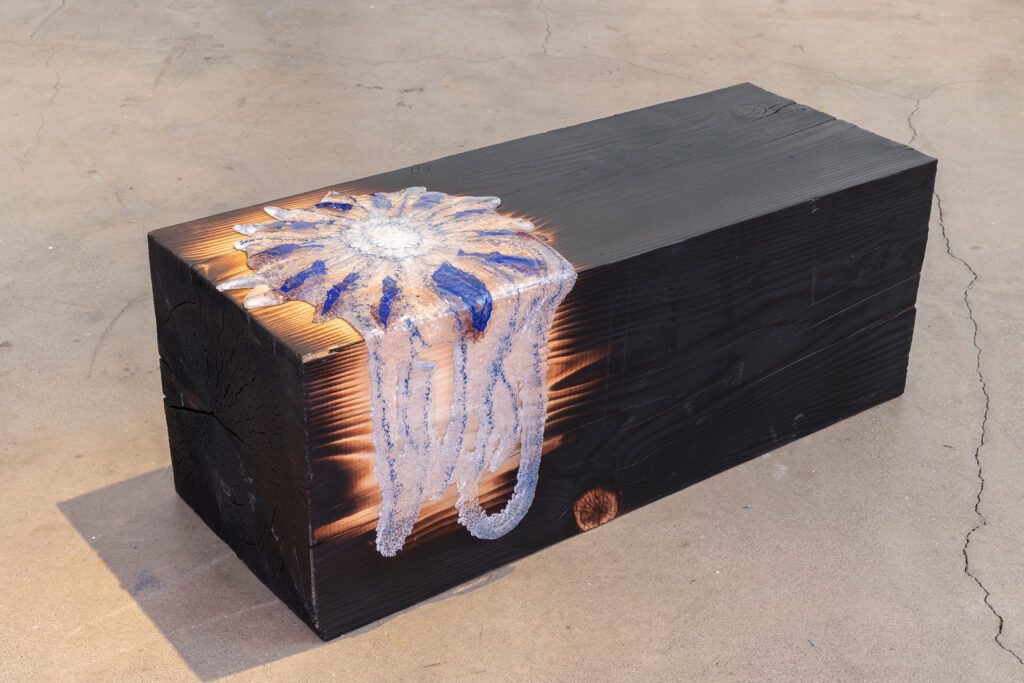
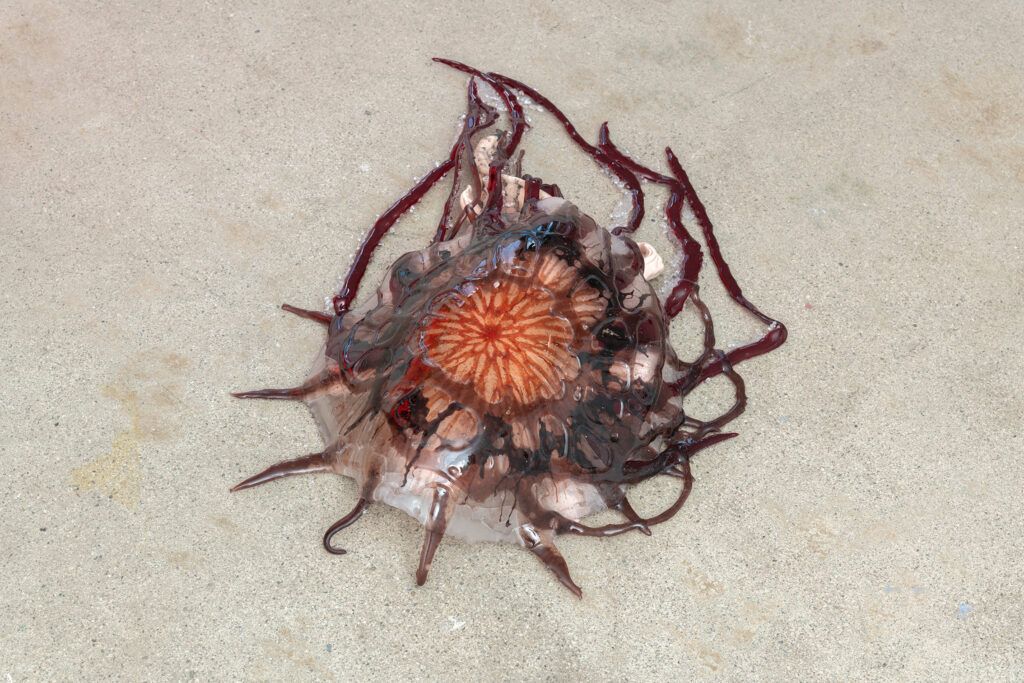
The description mentions the artworks forming a visual language that speaks about the future of the oceans and humanity. Could you elaborate on the messages or narratives that this visual language conveys to viewers?
The narrative that the works convey could be interpreted as an origin myth of an earth almost beyond humanity, where the ocean has transformed into primordial waters uncertain if or what life form they will now favor.
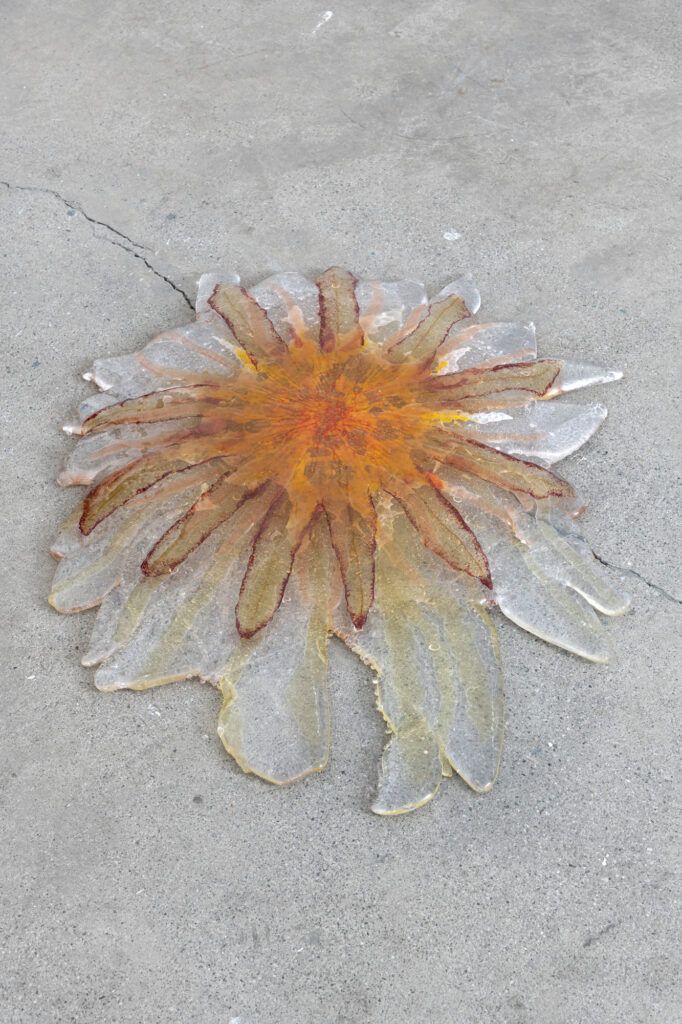
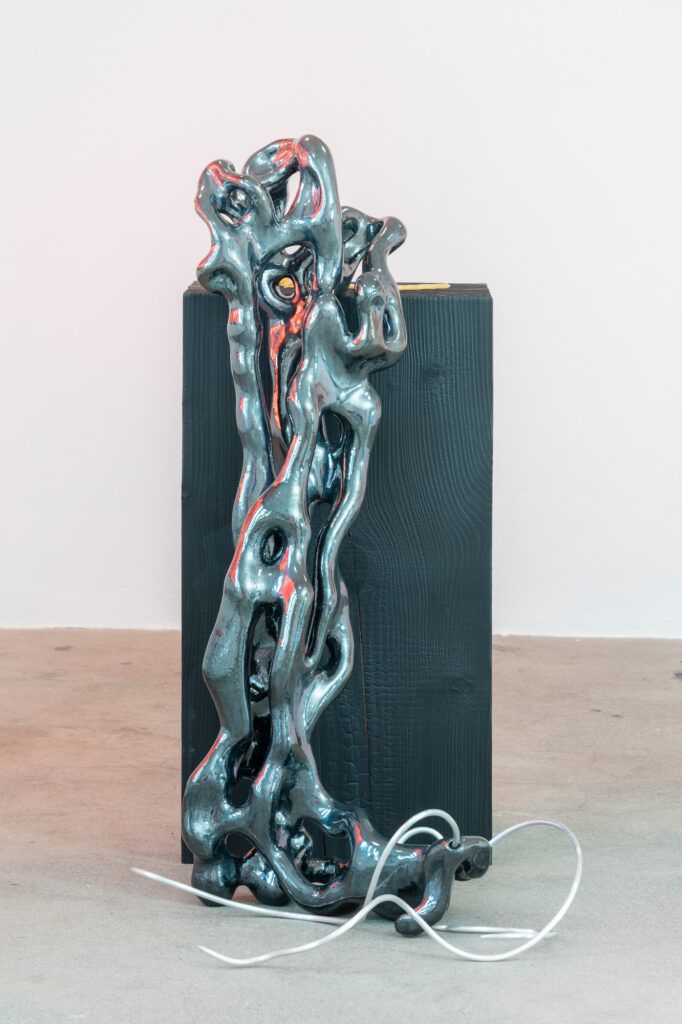
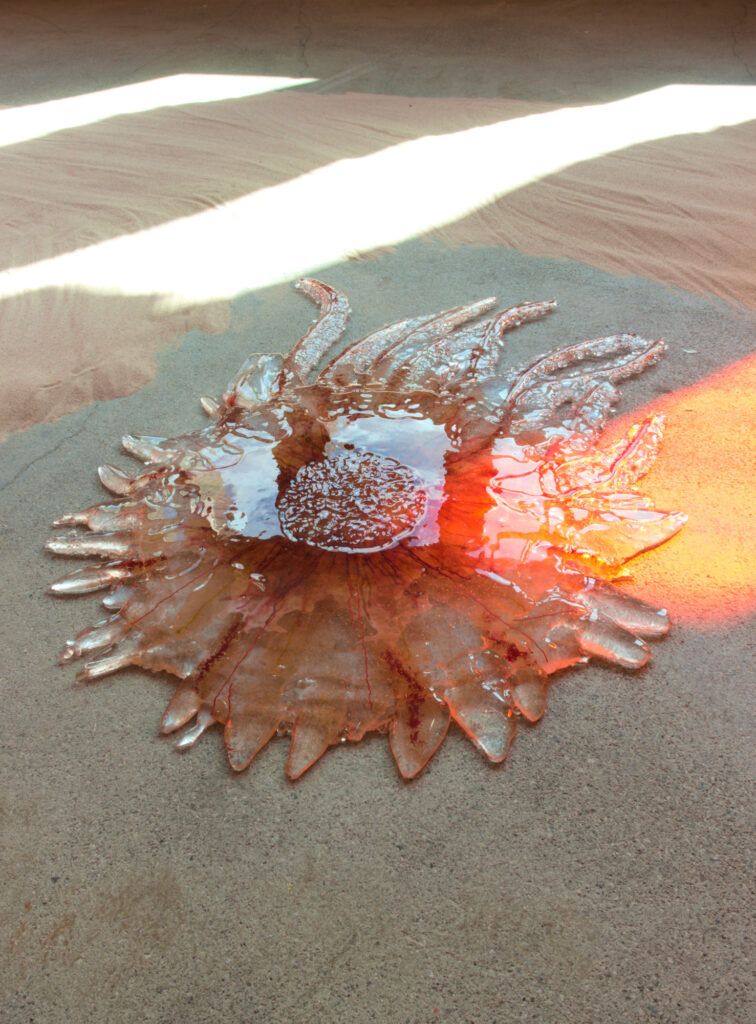
The abyss is described as both the world’s cradle and its grave, referencing Milton’s writings. How does the exhibition reflect this dual nature, and what insights into the perils and prospects of the future does it offer?
The exhibition is very influenced by ancient ideas about eternal cyclical renewa,l i.e. the end being the beginning and critique of the linear concept of time. Most explicitly the image of the ouroboros features as a drawing made in glass along with one of a wildfire. I would say that this dual nature is mostly reflected in the various materials and how the sculptures interact with one another. There are several glass pieces that act as these aquatic organisms that appear both as draped on top of burnt wooden logs, as well as melted over a ceramic shape of another animal. I wanted to leave the narrative open of whether they represent organisms evolving, merging or succumbing. In that way, the show doesn’t really offer any insights into the future but rather it invites the viewer to think about how the age of supposed predictability of nature is over and how every organism is perhaps facing a new earth.
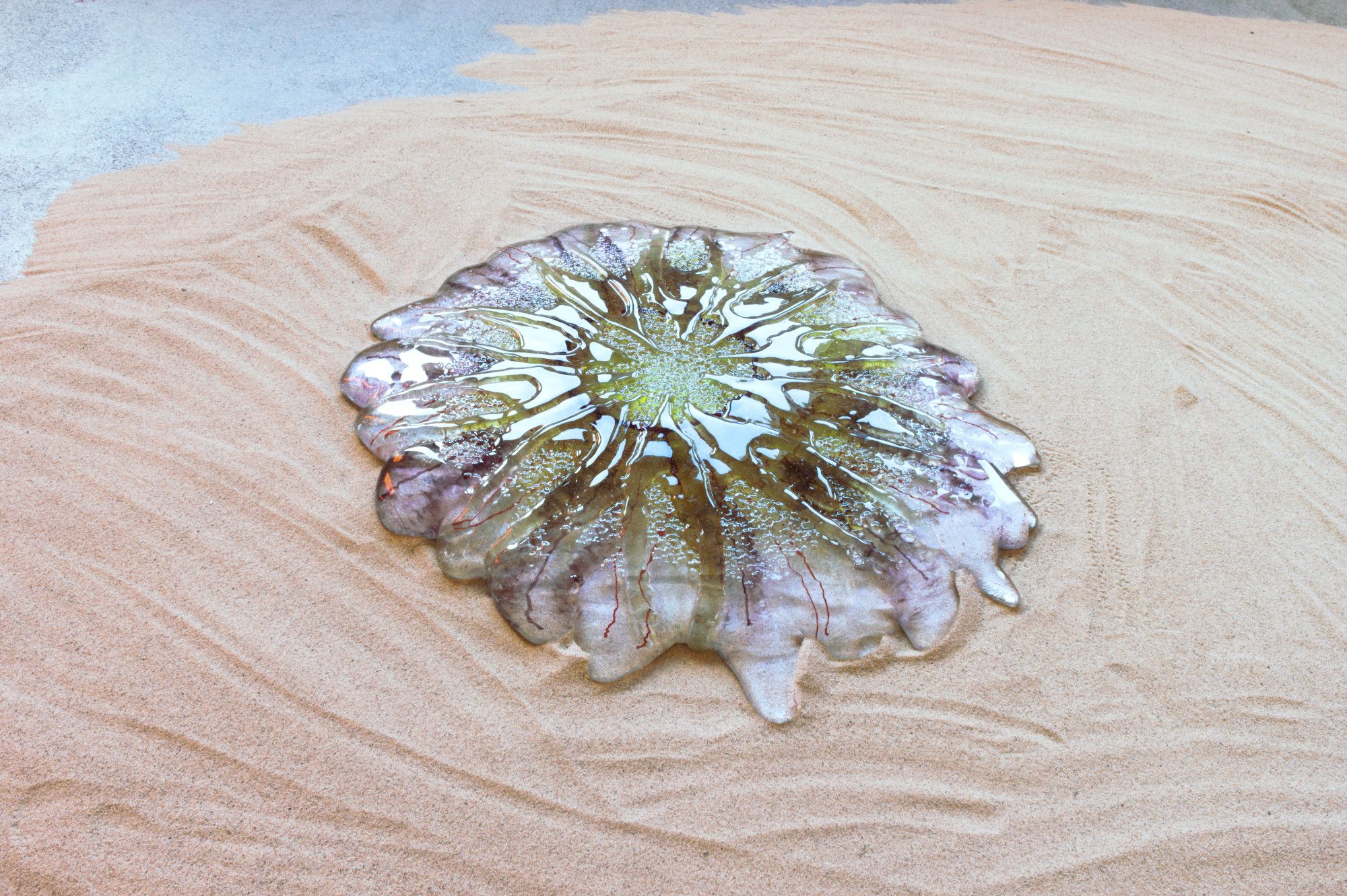
Can you discuss the artistic process and conceptual development behind “Oil Nebula”? How did you approach the creation of these artworks and the exhibition as a whole?
The process started in the summer of 2021, about a year before the first time the exhibition was shown, when I was looking at images documenting the disastrous heatwaves happening globally. At the time I was in Norway, where I’m still based, a place very sheltered from these extreme heatwaves and droughts. It made me think about what it means that large parts of an oil nation’s perception of global ecological disruption is distant and shaped through images. What also struck me was that the images that had the most lasting impact on me were the ones that reminded me of illustrations from various stories about the end of times. It felt embarrassing and even bad to relate these ongoing and very real ecological shifts to the realm of fiction. Yet what I also found was that these references from historical myths were to talk about environmental events as an all-encompassing reality for humanity, as opposed to narratives where catastrophic events are understood as being contained within political boundaries and borders. I wanted to acknowledge this role that the myth can have in forming a common understanding of the present and future state of the earth and its ecology.
The creation process of the works started with looking into how I could create the displaced liquid bodies of the jellyfish out of solid glass. I thought of them as likely inhabitants of the transforming sea and as the starting point for the other works. It took quite a lot of material testing before knowing how to approach it technically and even longer to know whether it was goning to work at all or not. I wanted them to sort of be believable and to feel like a living organism so that the more abstract ceramic works could also feed off of that, and somehow together form a living environment along with the elements of burnt wood, light and sand.
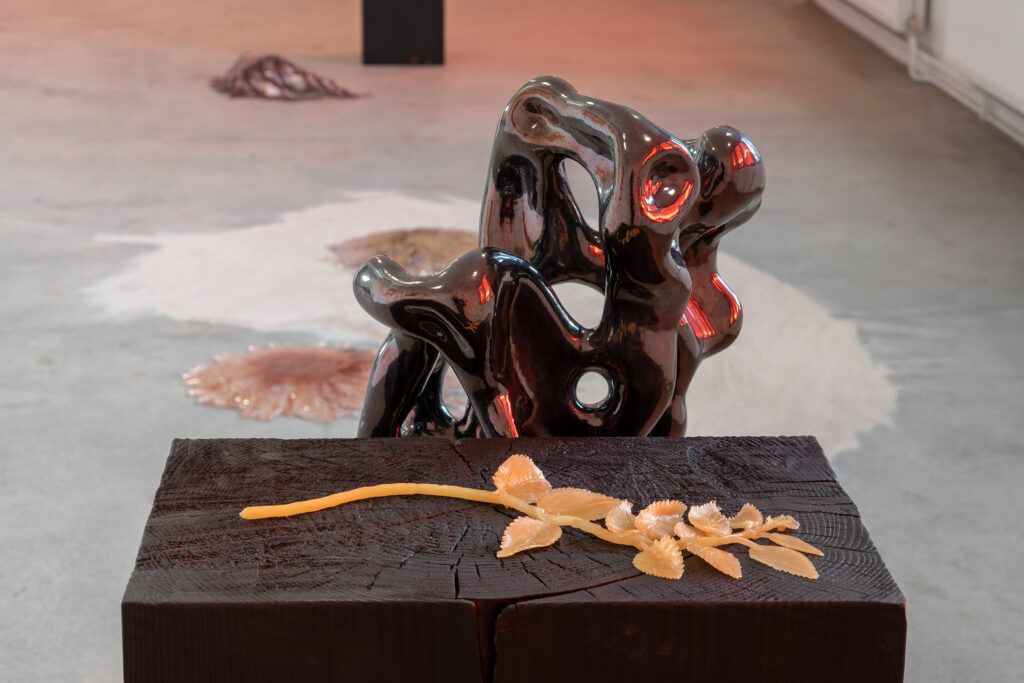
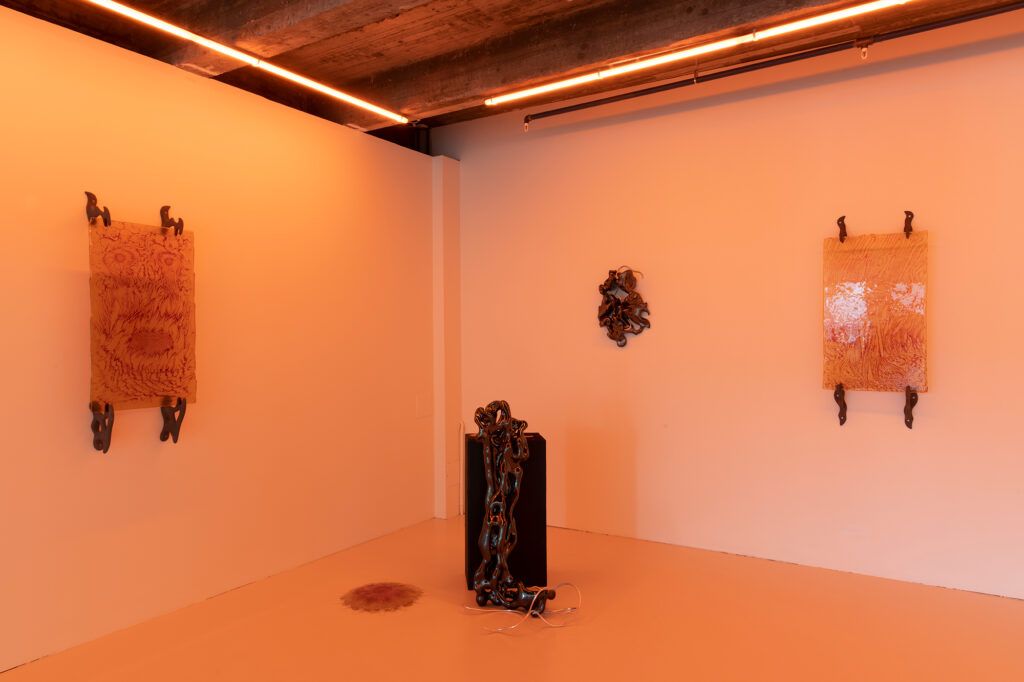
In what ways does “Oil Nebula” address the interconnection between environmental issues and the future of humanity? How does it invite viewers to consider their own role in shaping the future?
I think it addresses the interconnection by trying to imagine an environment favoring other species and where humanity is actually decentered from its future, to break with this dominant idea of human history being told through infinite linear progress and expansion. The basic idea is to, just like the myth, create material aiding in the reflection and furthering of in this case a narrative about an environment that is already shifting away from humanity.
Looking ahead, do you have any future projects or plans that expand on the themes explored in “Oil Nebula” or continue the exploration of the relationship between art and environmental concerns?
I do, but at the moment it seems like it’s moving more towards plants and thinking about relationships and communication between the plant and animal kingdoms.
